Results 9,081 to 9,090 of 12091
Thread: Anandtech News
-
01-18-19, 10:56 AM #9081
Anandtech: CES 2019: Dell Alienware Area-51m DTR Laptop with Core i9-9900K & GeForce
In the recent years a number of PC makers have introduced desktop replacement-class notebooks with processors originally developed for desktops. Meanwhile, large OEMs tend to be more conservative and kept using mobile CPUs for their high-end laptops. However, there is a first time for everything and this month Dell’s Alienware announced its first DTR notebook featuring Intel’s desktop six-core and eight-core processors. In fact, the Area-51m was specifically designed to offer high-end performance with few (if any) compromises.
Being a DTR machine, the Alienware Area-51m does away with any notion of "small." This starts with the screen, which is based around a 17.3-inch IPS display panel featuring a Full-HD resolution, 300 nits max brightness, as well as a 60 Hz or 144 Hz refresh rates. Dell is even offering models with G-Sync variable refresh functionality, depending on the exact SKU (see the table below for details), and higher-end versions of the Area-51m displays also feature Tobii eye-tracking. Past that, since many DTRs are used with external monitors, Dell did not necessarily need to equip its flagship gaming notebook with an Ultra HD LCD, especially given the challenges in driving that kind of a resolution in many games.

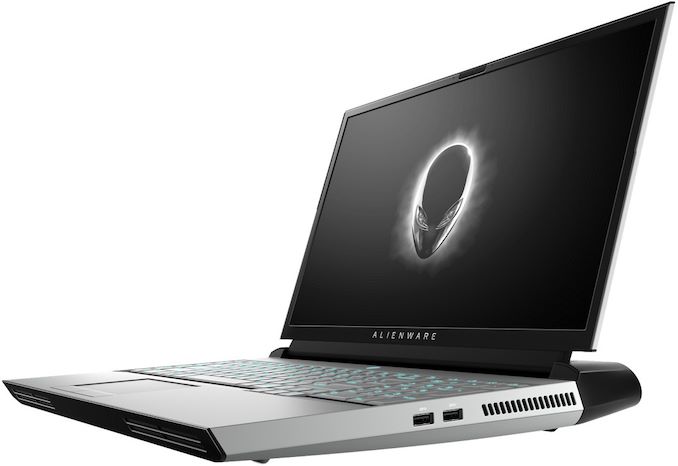
As noted, Dell’s Alienware Area-51m R1 is based on Intel’s LGA1151 Core i7/i9 processor with six or eight cores as well as Intel’s Z390 chipset. On the graphics hardware side of things, the system is equipped with NVIDIA’s GeForce RTX 2060/2070/2080 graphics adapters in Dell’s proprietary form-factor, so while the graphics adapter can technically be upgraded, right now at least it can only be switched by the manufacturer itself.
To cool down the CPU and GPU, Dell uses its proprietary Cryo-Tech v2.0 cooling systems comprising of two fans featuring two intake and two exhausts as well as eight thick copper-composite heat pipes (four for the CPU and four for the GPU).
The system has four DDR4 SO-DIMM slots supporting up to 64 GB of DDR4-2400 memory. As for storage, the Area-51m can work with up to three M.2 PCIe 3.0 x4 drives as well as a 2.5-inch HDD/SSD. So, depending on the exact model, the notebook can use one, two, or three storage devices.
As for connectivity, the Alienware Area-51m offers similar options as other notebooks from the brand. The laptop is equipped with a Killer Wireless 1550 2x2 802.11ac and Bluetooth 5.0 controller, a Realtek-enabled 2.5 GbE jack, one Thunderbolt 3-enabled USB-C port, three USB 3.0 Type-A ports, two display outputs (mini DisplayPort 1.3, HDMI 2.0), 3.5-mm audio jacks, and an Alienware Graphics Amplifier port for proprietary external graphics solutions. The notebook also features an RGB-backlit keyboard with a numpad and a 2.2 mm travel distance, a 720p webcam, stereo speakers, and a microphone array.
Traditionally for Alienware laptops, they come in a very stylized chassis featuring a futuristic design. The Area-51m will come in Lunar Light as well as Dark Side of the Moon colors schemes, with both enclosures outfitted with an AlienFX customizable RGB lighting (power button, alien head, infinite loop in the back).
Being a DTR laptop, the Area-51m is not intended be lightweight and portable, so Dell comes in heavy at 3.87 kilograms (8.54 pounds), which despite the weight is actually lighter than some other machines of this class. The laptop is also up to 42 mm thick, considerably thinner than some of its rivals. And despite the (relatively) thin profile, the Area-51m still packs a 90 Wh battery; though Dell isn't specifying just how long the laptop will actually last on a charge. Also of note: due to the sheer power requirements of the high-end laptop, Dell is actually splitting up its power consumption over two power adapters. Modest models will come with two 180 W PSUs, whereas high-end configurations will come with a 180 W PSU and a 330 W PSU.
Gallery: Alienware Area-51mGeneral Specifications of Dell's Alienware Area-51m Area-51m
1080p 60 HzArea-51m
1080p 60 Hz G-SyncArea-51m
1080p 144 Hz TobiiArea-51m
1080p 144 Hz G-Sync + TobiiDisplay Type IPS Resolution 1920×1080 Brightness 300 cd/m² Color Gamut 72% NTSC (?) Refresh Rate 60 Hz 144 Hz CPU Intel Core i7-8700 - 6C/12T, 3.2 - 3.6 GHz, 12 MB cache, 65 W
Intel Core i7-9700K - 8C/8T, 3.6 - 4.9 GHz, 12 MB cache, 95 W
Intel Core i9-9900K - 8C/16T, 3.6 - 5.0 GHz, 16 MB cache, 95 WGraphics Integrated UHD Graphics 620 (24 EUs) Discrete NVIDIA GeForce RTX 2060 with 6 GB GDDR6
NVIDIA GeForce RTX 2070 with 8 GB GDDR6
NVIDIA GeForce RTX 2080 with 8 GB GDDR6RAM 8 GB single-channel DDR4-2400
16 GB dual-channel DDR4-2400
32 GB dual-channel DDR4-2400
64 GB dual-channel DDR4-2400Storage Single Drive 256 GB PCIe M.2 SSD
512 GB PCIe M.2 SSD
1 TB PCIe M.2 SSD
1 TB HDD with 8 GB NAND cacheDual Drive 128 GB PCIe M.2 SSD + 1 TB (+8 GB SSHD) Hybrid Drive
256 GB PCIe M.2 SSD + 1 TB (+8 GB SSHD) Hybrid Drive
512 GB PCIe M.2 SSD + 1 TB (+8 GB SSHD) Hybrid Drive
1 TB PCIe M.2 SSD + 1 TB (+8 GB SSHD) Hybrid Drive
116 GB Intel Optane SSD + 1 TB (+8 GB SSHD) Hybrid Drive
256 GB PCIe M.2 SSD + 256 GB PCIe M.2 SSD
512 GB PCIe M.2 SSD + 512 GB PCIe M.2 SSD
116 GB Intel Optane SSD + 116 GB Intel Optane SSDTriple Drive 256 GB PCIe M.2 SSD + 256 GB PCIe M.2 SSD + 1 TB Hybrid Drive
512 GB PCIe M.2 SSD + 512 GB PCIe M.2 SSD + 1 TB Hybrid Drive
1 TB PCIe M.2 SSD + 1 TB PCIe M.2 SSD + 1 TB Hybrid Drive
116 GB Intel Optane SSD + 116 GB Intel Optane SSD + 1 TB Hybrid DriveWi-Fi + Bluetooth Killer Wireless 1550 2x2 802.11ac and Bluetooth 5.0 Thunderbolt 1 × USB Type-C TB3 portUSB 3 × USB 3.1 Gen 1 Type-ADisplay Outputs 1 × Mini DisplayPort 1.4
1×HDMI 2.0GbE Realtek 2.5 Gbps Ethernet controller Webcam 720p webcam Other I/O Microphone, stereo speakers, audio jacks, trackpad, Alienware Graphics Amplifier port, etc. Battery 90 Wh PSU 180 W + 180 W
180 W + 240 W
180 W + 330 WDimensions Thickness 27.65 mm | 1.09 inch ~ 42 mm | 1.7 inch Width 410 mm | 16.1 inch Depth 402.6 mm | 15.85 inch Weight (average) 3.87 kilograms | 8.54 lbs Operating System Windows 10 or Windows 10 Pro
The Alienware Area-51m DTR laptops are now available for pre-order and will ship later this month. The standard configurations cost from $2,520 to $4,220, but builds with all the bells and whistles will cost well beyond $5,000.
Related Reading:
- Dell at CES 2019: Alienware m17 Packs Core i9, GeForce RTX into 17.3-Inch Chassis
- Dell at CES 2019: Alienware m15 Gets Core i9, GeForce RTX, & 4K HDR400 Display Upgrade
- Alienware Installs NVIDIA’s GeForce RTX Cards In Aurora and Area-51 Desktops
- Alienware Area-51 Threadripper Edition Announced at E3, Available for Order July 27
- Dell at CES 2019: Alienware 55-Inch 4K 120 Hz OLED Gaming Monitor Showcased
Source: Dell
More...
-
01-18-19, 01:54 PM #9082
Anandtech: CES 2019: Digital Storm Entry-Level Vanquish PC with Bespoke Chassis
Digital Storm is known for beautiful-looking gaming PCs semi-customized but mostly built from off-the-shelf components. In a bid to differentiate itself from other makers, as well as DIY builds, the company plans to move away from standard cases and use only unique build-to-order chassis for all of its systems, including the entry-level Vanquish series. The first of such PCs was demonstrated at CES earlier this month.
The new chassis for Digital Storm’s Vanquish computers is a dual-chamber PC case that can house an ATX motherboard, a custom or all-in-one liquid cooling system with a 360-mm radiator, multiple fans, several storage devices, programmable RGB lighting (which is generally designed into various components like coolers or motherboards), a tempered glass window, and so on. The front panel of the case carries Digital Storm’s logo, two USB 3.0 Type-A ports as well as 3.5-mm audio connectors.
A particularly noteworthy feature of the upcoming Vanquish PCs is a large PSU chamber that can accommodate a power supply of almost any length. This compartment enables Digital Storm or its customers to install a 1000+ W PSU for an ultra-high-end system.
Another interesting capability is built-in hardware monitor that displays temperature and other data about the status of the system.
Digital Storm’s upcoming Vanquish PCs will sustain their entry-level pricing that starts at $699, but will feature an exclusive design and features, a rare event in this price class. In total, the company will offer four versions of the Vanquish later this quarter.
Related Reading:
- Digital Storm Equinox: 15.6-inch 1080p144 with Core i7 and GTX 1070 Max-Q
- Digital Storm at CES: Project SPARK Mini-PC Announced with GTX 1080 and i7-8700K
- Digital Storm BOLT X: A Kaby Lake-Based SFF PC with Custom Liquid Cooling
Source: Digital Storm
More...
-
01-18-19, 01:54 PM #9083
Anandtech: CES 2019: Deepcool Unveils 280W Capacity Assassin III Air Cooler
In a world where closed-loop liquid cooling systems have become a default choice for enthusiast-class PCs, the evolution of air coolers has inevitably slowed down. Nonetheless, there are manufacturers that keep introducing rather interesting air coolers that can cool down even high-end desktop processors. One of such devices is Deepcool’s Assassin III, which was demonstrated at this year's CES.
The 165-mm tall Deepcool Assassin III is comprised of a massive aluminum radiator equipped with seven heat pipes and two 140-mm fans. According to the comapny, to optimize airflows and maximize performance the cooling system actually features spoilers on its top fins, a rather unusual engineering decision. The Assassin III is rated for up to 280 W of cooling, which is enough for any high-end workstation CPU at stock speeds, and also enough for most overclocked desktop processors.
Besides its cooling performance, Deepcool's other key design choice with the Assassin III is its compatibility with high-end RAM modules. The high profile design of the cooler means that it can stay clear of DIMMs of up to 54 mm in height, up from 45 mm in case of the previous-gen model.
At this point Deepcool hasn't nailed down all of the specifications of the cooler, as won't hit the market until a bit later on. But expect the device to weigh around 1.5 kilograms, while the cooler's acoustics should be favorably limited thanks to the two 140-mm fans. And of course, it will be compatible with all modern CPU platforms from AMD and Intel (though compatibility with TR4 is something that remains to be seen).
Deepcool intends to start selling its Assassin III mega cooler this May at an MSRP of $99.99. Traditionally for Deepcool, the device will be bundled with a screw driver and G-15 thermal compound.
Related Reading:
- Deepcool & Gamerstorm Add to CPU Liquid Cooler Lineups with Castle 240/280 RGB and Captain 240 Pro
- Alpenföhn Unveils Olymp: A Giant Air Cooler Rated for 340W TDP
- The 140mm Slim Tower CPU Cooler Roundup: Thin & Light Done Just Right
- Top Tier CPU Air Coolers Q3 2015: 9-Way Roundup Review
Source: Deepcool
More...
-
01-18-19, 03:49 PM #9084
Anandtech: CES 2019: Kingston A2000 NVMe SSD Aiming for Below SATA Pricing
Manufacturers of SSDs have traditionally sold drives with a PCIe interface at a premium when compared to devices featuring a SATA interface because of higher performance and despite of the fact that most SATA SSDs use drive form-factor and are more expensive to make than M.2 modules. Later this year Kingston plans to launch its A2000-series SSDs featuring a PCIe 3.0 x4 interface that will be priced below SATA SSDs.
The Kingston A2000-series drives will be offered in various controller/NAND configurations in a bid to be flexible in terms of BOM costs and ensure that the SSDs are consistently cheaper than solutions featuring a SATA interface. In particular, Kingston plans to use Silicon Motion’s SM2263-series and Phison’s low-cost controllers along with Toshiba’s BiCS4 3D TLC NAND memory for these drives.
Kingston’s A2000 SSDs will be offered in 240 GB, 480 GB, and 960 GB configurations, which is in line with other low-cost SSDs. As for performance, the manufacturer targets up to a 2000 MB/s sequential read speed as well as up to a 1500 MB/s sequential write speed. A prototype Kingston A2000 512 GB SSD that Kingston demonstrated at CES offered up to a 1986 MB/s sequential read speed as well as an up to a 1572 MB/s sequential write speed. Such performance levels are typical for SMI’s SM2263XT/SM2263 controllers, so these results are not too surprising. Meanwhile, we are looking forward to see official test results of another version of the A2000.
Kingston says that performance of A2000 drives featuring different controllers will be consistent, so end-users will not have to wonder which SSD they are buying, but this claim will have to be verified by independent testing.
While Kingston demonstrated prototypes of its A2000 -series SSDs at CES, it is not clear when the company intends to ship the final drives. While we do know for sure that Kingston wants to make its A2000-series PCIe SSDs cheaper than SATA SSDs, it still remains to be seen what they will be priced at, especially with NAND prices continuing to fluctuate as the weeks go by.Comparison of Kingston's Client NVMe SSDs Capacity A2000 A1000 KC2000 KC1000 240 - 960 GB 240 - 960 GB 240 TB ~ 2 TB 240 - 960 GB Controller Silicon Motion
PhisonPhison PS5008-E8 Silicon Motion Phison PS5007-E7 NAND Flash Toshiba's 96-layer BiCS4 3D TLC Toshiba's 256 Gb 64-layer BiCS3 3D TLC 3D TLC Toshiba's 128 Gb planar MLC Form-Factor, Interface M.2-2280, PCIe 3.0 x4 M.2-2280, PCIe 3.0 x2, NVMe 1.2 M.2-2280, PCIe 3.0 x4 M.2-2280, PCIe 3.0 x4, NVMe 1.1 Sequential Read Up to 2000 MB/s Up to 1500 MB/s Up to 3000 MB/s Up to 2700 MB/s Sequential Write Up to 1500 MB/s Up to 1000 MB/s Up to 2500 MB/s Up to 1600 MB/s Random Read IOPS ? Up to 120K IOPS ? Up to 290K IOPS Random Write IOPS ? Up to 100K IOPS ? Up to 190K IOPS
Related Reading:
- The Kingston A1000 NVMe SSD Review: Phison E8 Revisited
- Kingston Launches A1000 Entry-Level PCIe SSDs: Phison PS5008-E8 with 3D TLC
- Kingston at CES 2018: A 6.4 TB U.2 Enterprise SSD with Four M.2 Behind a PEX Chip
Source: Kingston
More...
-
01-22-19, 08:23 AM #9085
Anandtech: Intel Discontinues Quark SoCs and Microcontrollers
Intel has announced that it will discontinue all of its Quark-series SoCs microcontrollers. Intel’s partners will have to make their final orders for the chips this summer, whereas the company will continue to fulfil Quark orders several years down the road.
Intel’s 32-bit Quark SoCs and microcontrollers are aimed at IoT applications, including wearables, smart home devices, industrial, and other. Intel’s customers will have to make their final Quark orders by July 19, 2019. Meanwhile, the manufacturer will keep shipping its Quarks till July 17, 2022, as makers of the said devices have very long product cycles and need time to develop and replace models use the processors.
Intel introduced its Quark products in late 2013 along with its Galileo mainboard carrying a Quark microcontroller. Intel also launched its Quark-based Edison microcomputer, the Curie module featuring a Quark SE processor. By now, Intel has discontinued all of its Quark-powered products, including Galileo, Edison, Joule, and Curie. Meanwhile, the latter will still be available to interested parties until June 15, 2020.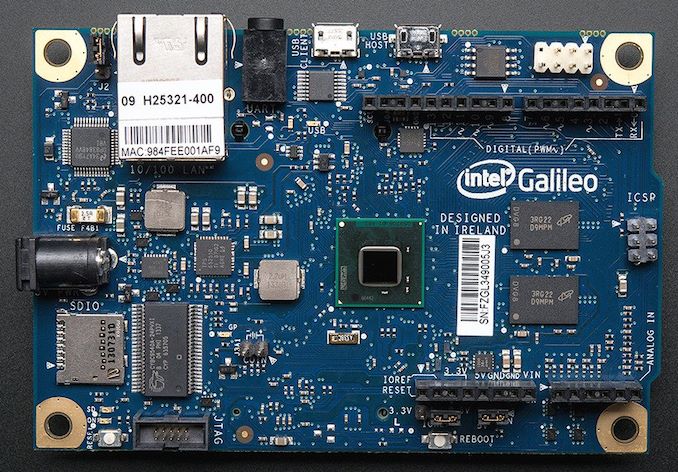 Intel Galileo. Image by Adafruit.com
Intel Galileo. Image by Adafruit.com
Originally meant to power emerging mass market devices, Intel’s Quark SoCs and microcontrollers have barely become popular among makers of actual products. Therefore, it is not surprising that Intel discontinues the lineup without introducing any direct replacements.
The list of Quark products set to be discontinued includes the following SKUs:
- Intel Quark SoC X1020D
- Intel Quark SoC X1000
- Intel Quark SoC X1010
- Intel Quark SoC X1021D
- Intel Quark SoC X1001
- Intel Quark SoC X1011
- Intel Quark SoC X1020
- Intel Quark SoC X1021
- Intel Quark Microcontroller D1000
- Intel Quark Microcontroller D2000
- Intel Quark SE C1000 Microcontroller
- Intel Quark Microcontroller D2000
- Intel Quark SE C1000 Microcontroller
Related Reading- Intel Announces “Quark” SoC Family: Tiny SoCs For Tiny Devices
- Intel Announces Galileo: Quark Based Arduino Compatible Developer Board
- IDF 2014: Intel Edison Development Platform Now Shipping
Source: Intel
More...
-
01-22-19, 08:23 AM #9086
Anandtech: ASUS Z390 Platforms Now Support 128 GB of Memory
ASUS has released a new UEFI BIOS version for its ROG Maximus XI Hero motherboard that enables support of up to 128 GB of DDR4 memory platform using 32 GB unbuffered modules featuring Samsung's newest 16 Gb memory chips. The company will release new BIOSes for other Intel Z390-based platforms shortly. Other motherboard manufacturers will likely follow as Intel has stated that this memory will be supported by its 9th Gen Core processors.
Last year Samsung started to mass produce 16 Gb DDR4 memory chips primarily aiming high-capacity RDIMMs for servers. These chips eventually came down to consumer grade memory as well, allowing for 32 GB UDIMMs to be added to Samsung's portfolio. Because Intel’s MRC for mainstream processors doesn't automatically support 16 Gb ICs, new firmware is required. The company has officially updated its memory reference code for the 9th Gen Core processors, and so it is up to motherboard manufacturers to update their UEFI BIOSes to gain support for 32 GB UDIMMs.
To date, ASUS has validated only SL Link's J4BGUS2G8QHBC DDR4-2667 CL19 modules with its ROG Maximus XI Hero motherboard.
Intel is also validating various modules that use 16 Gb chips with its processors, so expect its “official” list of supported 32 GB UDIMMs to emerge in the coming weeks or months.
It is worth pointing out that there are two competing implementations for 32GB UDIMMs. 'Double Capacity' memory modules released by G.Skill and Zadak last year are based on 32x16 Gb chips, but are essentially two modules on one PCB. This is different to the Samsung modules, which use 16x32 Gb chips.
Related Reading- Intel to Support 128GB of DDR4 on Core 9th Gen Desktop Processors
- G.Skill Unveils 32 GB Trident Z RGB DC DDR4: Double Height, Double Capacity Memory
- Double Height, Double Capacity DDR4? ZADAK's New 32 GB UDIMMs
- Samsung Unveils 32 GB DDR4-2666 SO-DIMMs
- Samsung Adds 32 GB UDIMMs to Memory Lineup
Source: ASUS
More...
-
01-22-19, 10:47 AM #9087
Anandtech: CES 2019: Origin PC Readies An All Glass Cube Compact PC
Origin PC demonstrated its all-new Cube desktop machine at CES. The fully-upgradeable computer comes in an all-glass compact chassis that can house a standard-length video card, a liquid-cooled factory-overclocked CPU from AMD or Intel, and seven storage devices.
Measuring 28.6×27.3×33 cm (11.25×10.75×13 inches), the Origin Cube PC chassis features three compartments. One to house a Mini-ITX motherboard with an installed CPU and graphics card, one for a radiator of an liquid cooling solution and with seven storage devices, and a third for a PSU (probably featuring an SFX form-factor). The case is compatible with standard-length graphics cards, has three 2.5-inch hot-swappable bays for HDDs or SSDs, and four more bays for storage devices (the manufacturer does not disclose whether these are 2.5-inch or 3.5-inch bays, but the former are more likely to be there).
From a feature set point of view, we expect Origin PC’s Cube to offer similar capabilities as today’s high-end Mini-ITX platforms including support for enthusiast-class CPUs form AMD and Intel, one or more M.2-2280 PCIe 3.0 x4 slots for SSDs, 802.11ac/802.11ax Wi-Fi, several display outputs, multi-channel audio, Thunderbolt 3 (depending on the motherboard), USB Type-C, and so on.
To ensure proper cooling of the processor and the graphics card, the Origin Cube PC has two large fans for air intake in addition to internal fans.
Origin PC did not say when exactly it plans to release its Cube PC, but since the company demonstrated it a large trade show, its development is in final stages and we are going to see it rather sooner than later.
Gallery: Origin Cube PC





Origin PC was among the first boutique PC makers to offer small form-factor gaming desktops, and it did so under its Chronos brand. Origin prides itself on well-thought configurations, professional assembly, and expert factory-overclocking. Since the PCs come in off-the-shelf cases, it is sometimes difficult for Origin PC to differentiate from its rivals. With a bespoke all-glass cube-like case, the boutique PC maker aims to offer high performance and an exclusive look. This case will be able to be further customized with UV printing, laser etching, and custom paint.
Related Reading- Origin PC Rolls-Out New Chronos SFF PCs with Enhanced Expandability
- ORIGIN PC Intros Next-Gen Customizable Desktops: Genesis, Millenium, and L-Class
- Shuttle Unveils SZ270R9 SFF PC with ‘Turbo’ Button: Core i7, Long GPU, 6 Drives & More
- Shuttle’s X1 Now Available: NUC-Like PC With a GeForce GTX 1060 GPU
Source: Origin PC
More...
-
01-22-19, 10:47 AM #9088
Anandtech: The Samsung 970 EVO Plus (250GB, 1TB) NVMe SSD Review: 96-Layer 3D NAND
Samsung is updating its mainstream NVMe SSD with a new generation of 3D NAND that brings improved performance and power efficiency. The new 'Samsung 970 EVO Plus' keeps the same controller as last year's 970 EVO, but the upgrade to 96-layer 3D TLC NAND is important enough to deserve the new product name. In our review, we've been testing the 250GB and 1TB NVMe M.2 models.
More...
-
01-22-19, 01:26 PM #9089
Anandtech: CES 2019: Digital Storm Spark, a ‘Mini-ITX’ with MXM RTX 2080
We may already be a week beyond the annual CES show, but there is still plenty to discuss. One of the exciting systems I saw at the event was the new Digital Storm ‘Spark’ – a small form factor PC designed for high-end gaming. Inside was that odd-looking ASRock MXM motherboard, paired with an MXM GPU and even liquid cooling, all for a powerful but small system.
Inside we see the ASRock motherboard with two SO-DIMM slots, connected via water cooling to an Alphacool radiator, a fan, and a small reservoir. At the bottom is the MXM GPU, which in this system was a GTX 1080 if I recall correctly, although Digital Storm stated they are looking into upgrading the system to an RTX 2080 when the MXM modules become available. They also stated they are looking to watercool it too.
The Spark chassis design is specifically for this motherboard in mind, which puts an end to the question as to where that motherboard was going to end up. With such a small volume for both a high-end system and liquid cooling, we can see in the images that it is a tight squeeze for sure. On the rear of the motherboard is space for three NVMe drives.
The low-end version of the Spark starts at $999, with prices rising from there. No specific date was given on the RTX 2080 version.
Gallery: CES 2019: Digital Storm Spark, a ‘Mini-ITX’ with MXM RTX 2080





More...
-
01-22-19, 01:26 PM #9090
Anandtech: EVGA Launches Its First Audio Card, the Nu Audio
EVGA currently sells a range of products: motherboards, graphics cards, power supplies, cases, and laptops. EVGA has been expanding to other markets for a number of years now, and at CES 2016 we saw the beginnings of a USB audio device due to a collaboration with a professional company called Audio Note. We were impressed at the time, but since then we've not heard much about the project, and had kind of assumed it had been abandoned. But at CES 2019 EVGA introduced the results of the collaboration: its first audio card. This card uses a PCIe to USB controller, making it an internal USB audio product.
EVGA’s Nu Audio card was designed by Audio Note, a UK-based company that develops custom audio solutions. The PCIe 2.0 x1 card implements a PCIe to USB controller to the hardware, and is based on the XMOS xCORE-200 DSP accompanied by Asahi Kasei Microdevices’ (AKM) AK4493 DAC, the AKM AK5572 ADC, and the Cirrus Logic CS5346 ADC. The board uses a silver and gold-plated multilayer PCB with isolated dual ground planes for analogue and digital circuits. Being aimed at users who want a cleaner sound but also better sound support out of their audio outputs, the Nu Audio card uses audio-grade capacitors and resistors that carry Audio Note, Nichicon, WIMA, and Panasonic brands. Besides, it features switchable OP amps as well as a dedicated Maxim amp for headphone volume control.
The Nu Audio card is equipped with two RCA line outs for left and right speakers that can output 384 KHz at 32-bit audio, one output for headphones featuring impedance between 16 and 600 Ohms, an S/PDIF out, a line in supporting 384 KHz at 32-bit audio, and a mic in supporting 192 KHz at 24-bit audio. In addition to traditional analogue and digital outputs, the card supports USB audio class 2.0 enabled by the ASMedia ASM1042 PCIe-to-USB bridge. Meanwhile, to ensure that the board gets enough power, it has a SATA power connector coupled with a multi-stage VRM.
Since EVGA usually targets enthusiasts, its audio card is not only outfitted with a cooling system for heating components, but it is covered by a shroud featuring 10-mode RGB lighting as well as four Audio Reactive Lighting options that match the board’s lighting and audio. The bundled software allows for full EQ tuning, as well as a dynamic response implementation. With the right software, the audio card can support full audiophile formats, such as DSD, and switch between them as required.
Buy EVGA NU Audio on Newegg
EVGA is now currently selling the card, at a price of $249. This is the first in a line of cards, we were told - depending on the feedback of the hardware, the collaboration with Audio Note might extend into a gaming focused design or a more professional audio input/output design.
Related Reading- EVGA Launches B360 Micro Gaming: Its First Budget Motherboard
- EVGA Releases CLC120 CL11 AIO CPU Cooler: Simple and Affordable
- EVGA Launches SC17 1080 Laptop: Core i7-7820HK, GeForce GTX 1080, TB3
- EVGA Torq X10 Gaming Mouse Review
Source: EVGA
More...
Thread Information
Users Browsing this Thread
There are currently 17 users browsing this thread. (0 members and 17 guests)




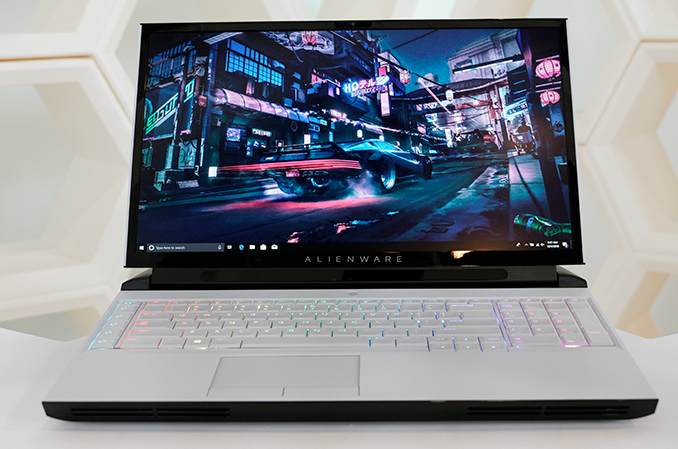
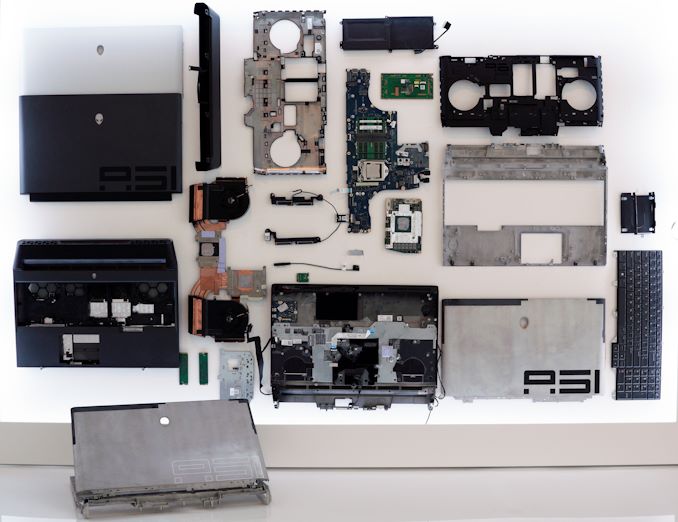
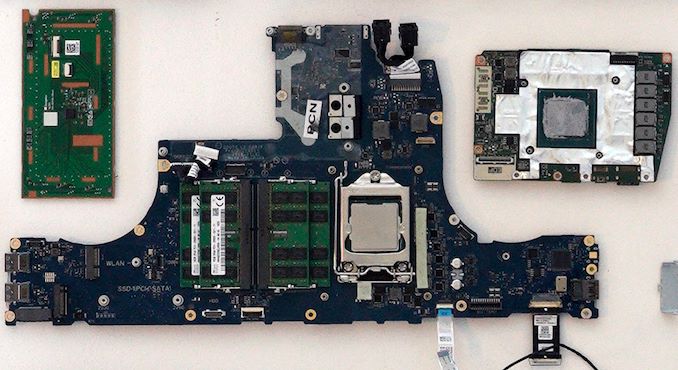
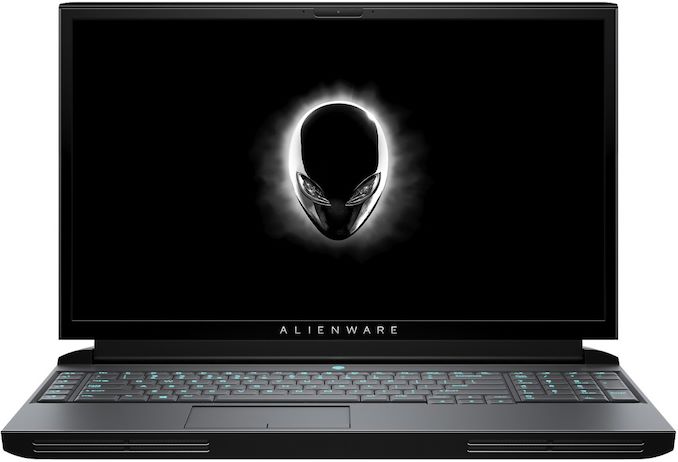
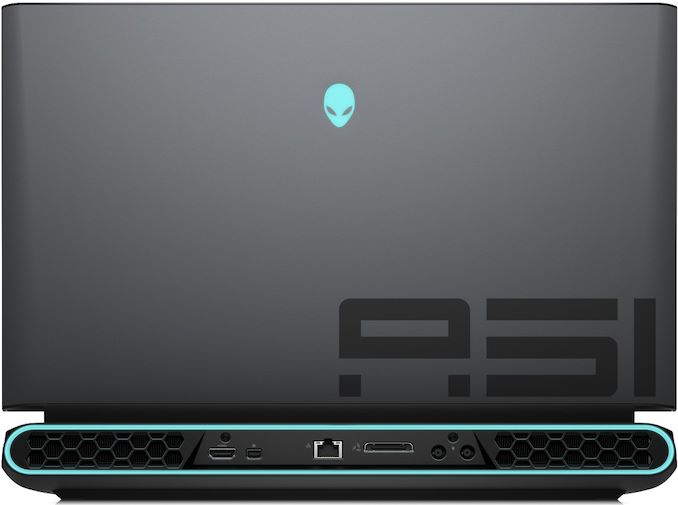






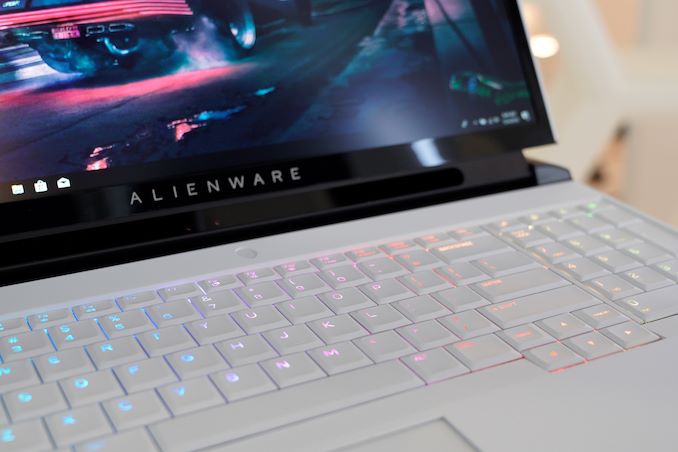

 Quote
Quote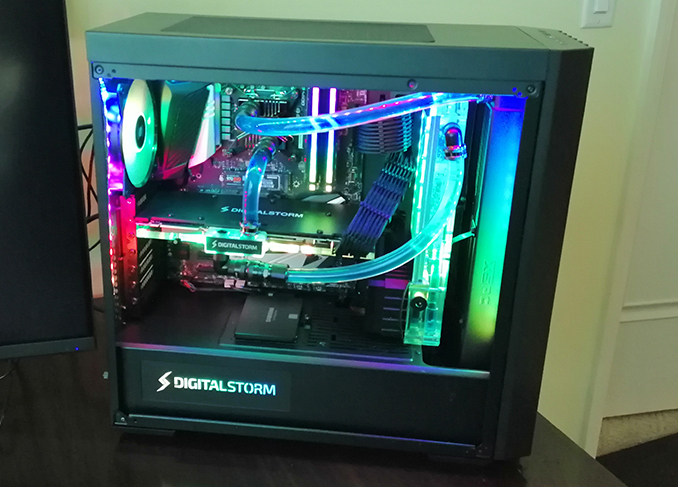

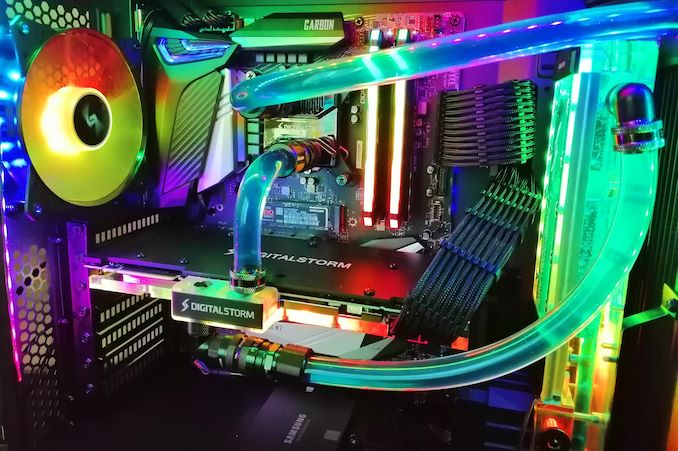
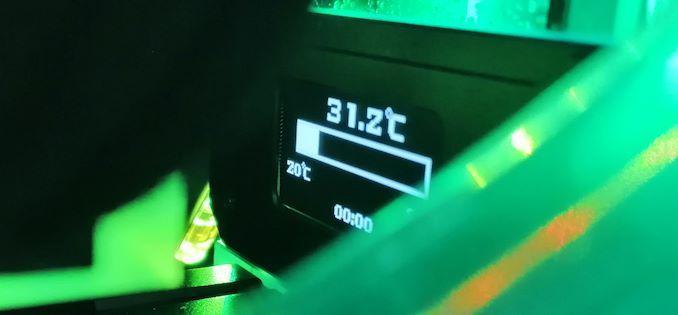
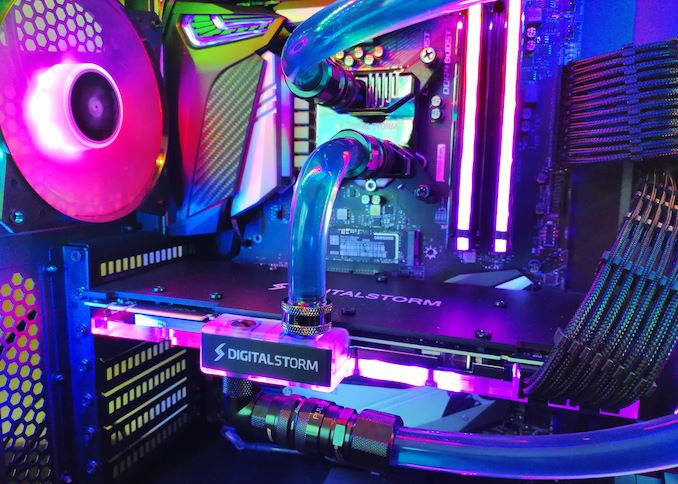
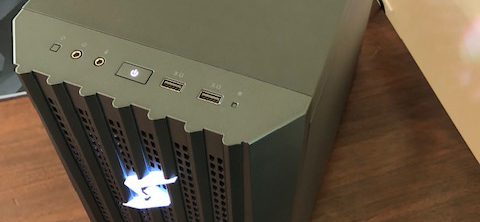
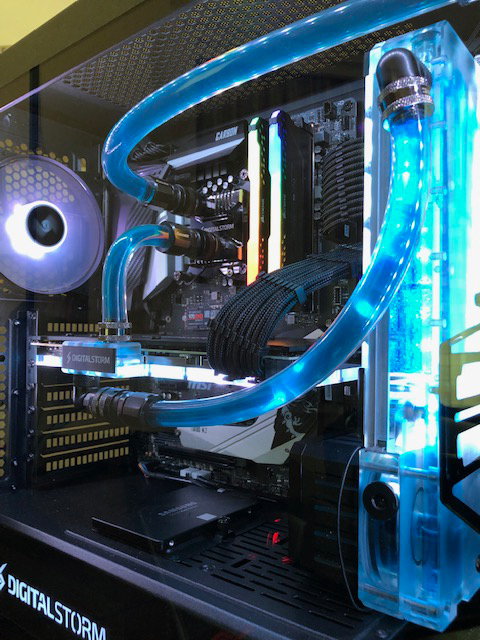
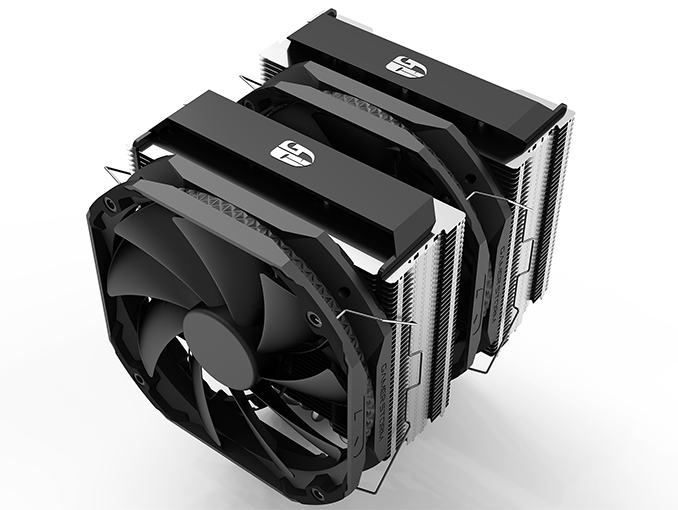
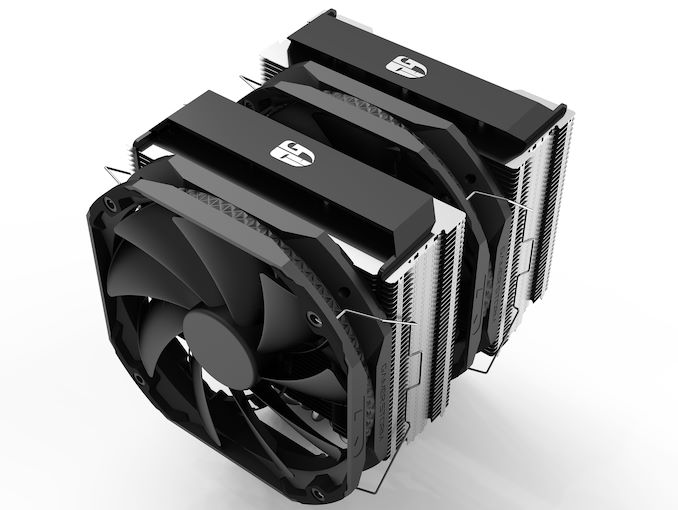

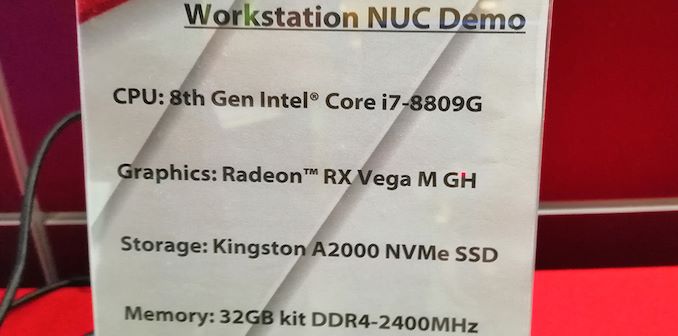
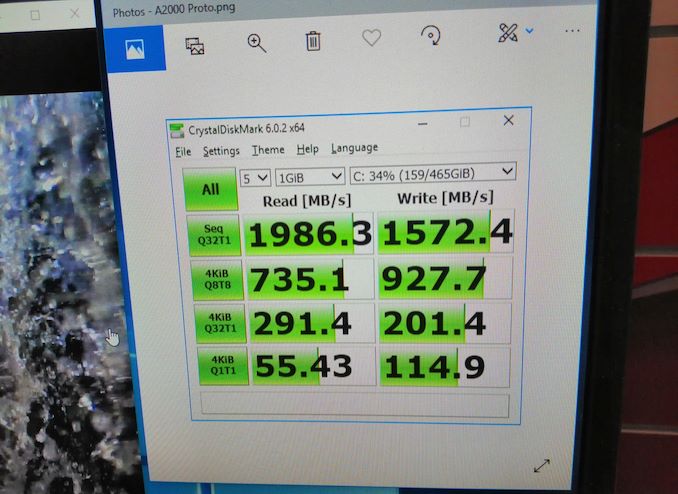
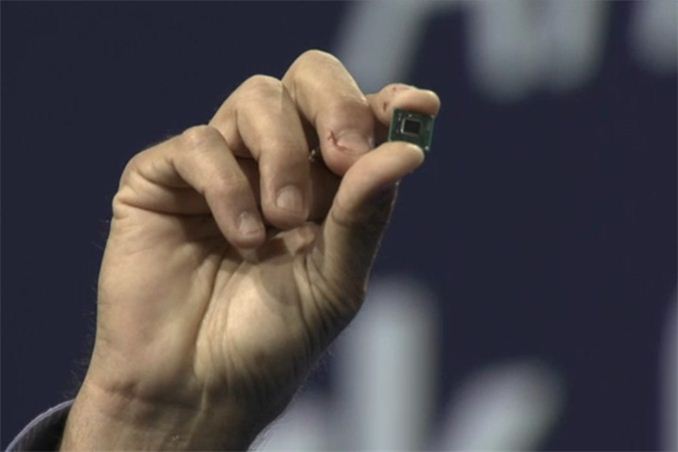


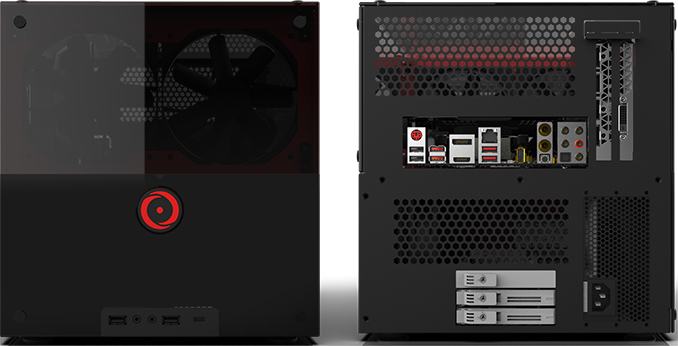
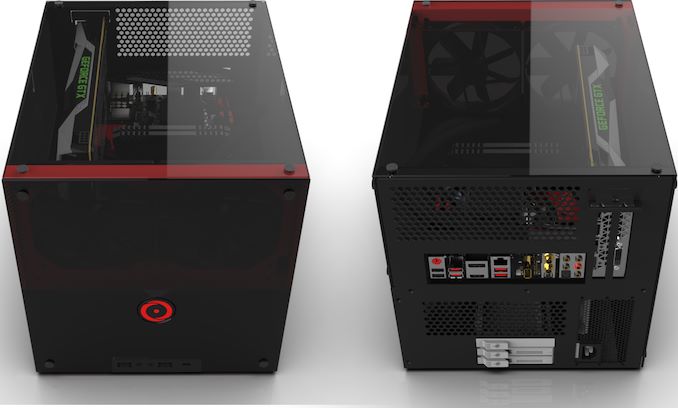
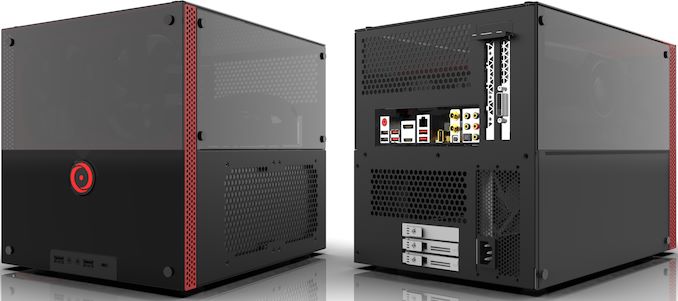

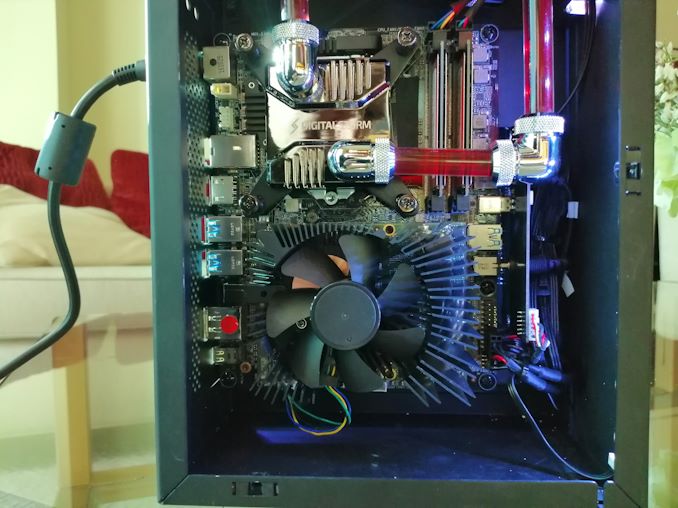
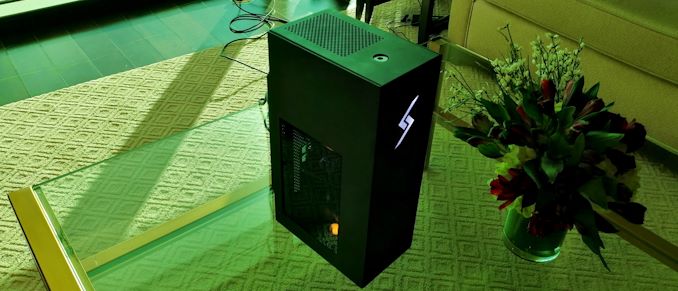
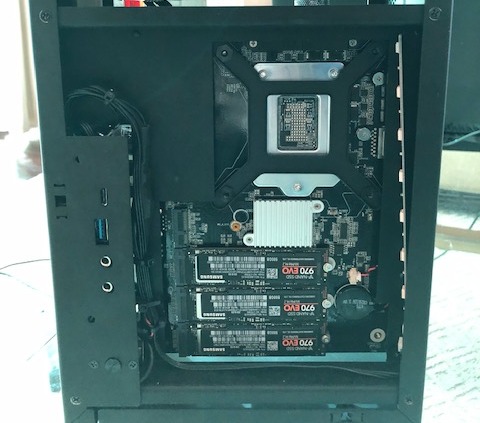


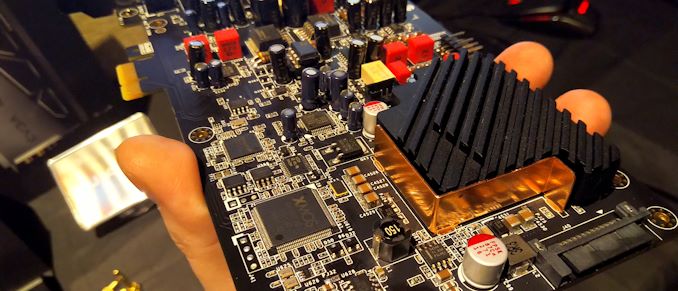

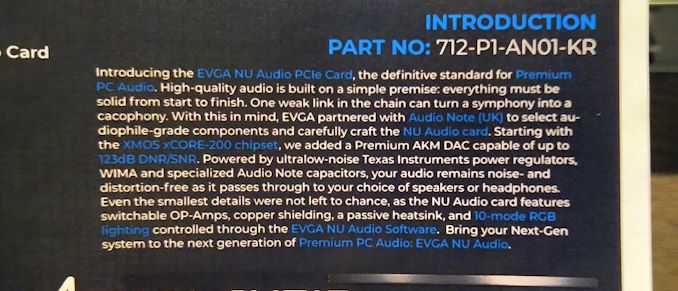

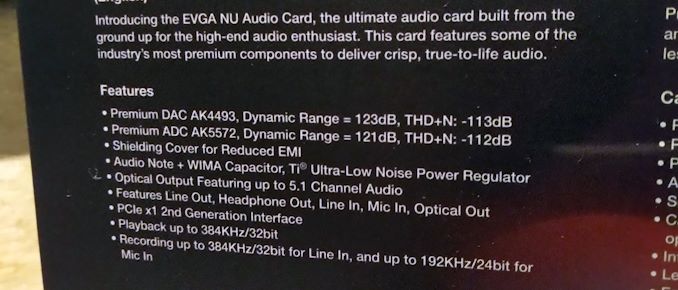
















Bookmarks